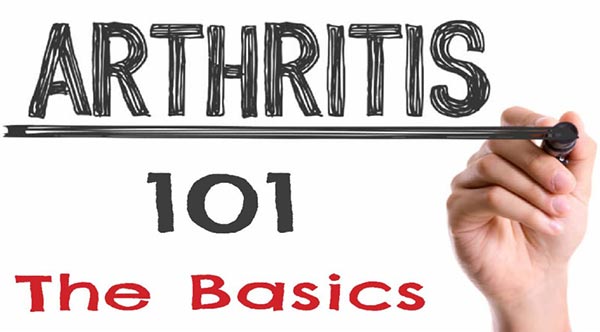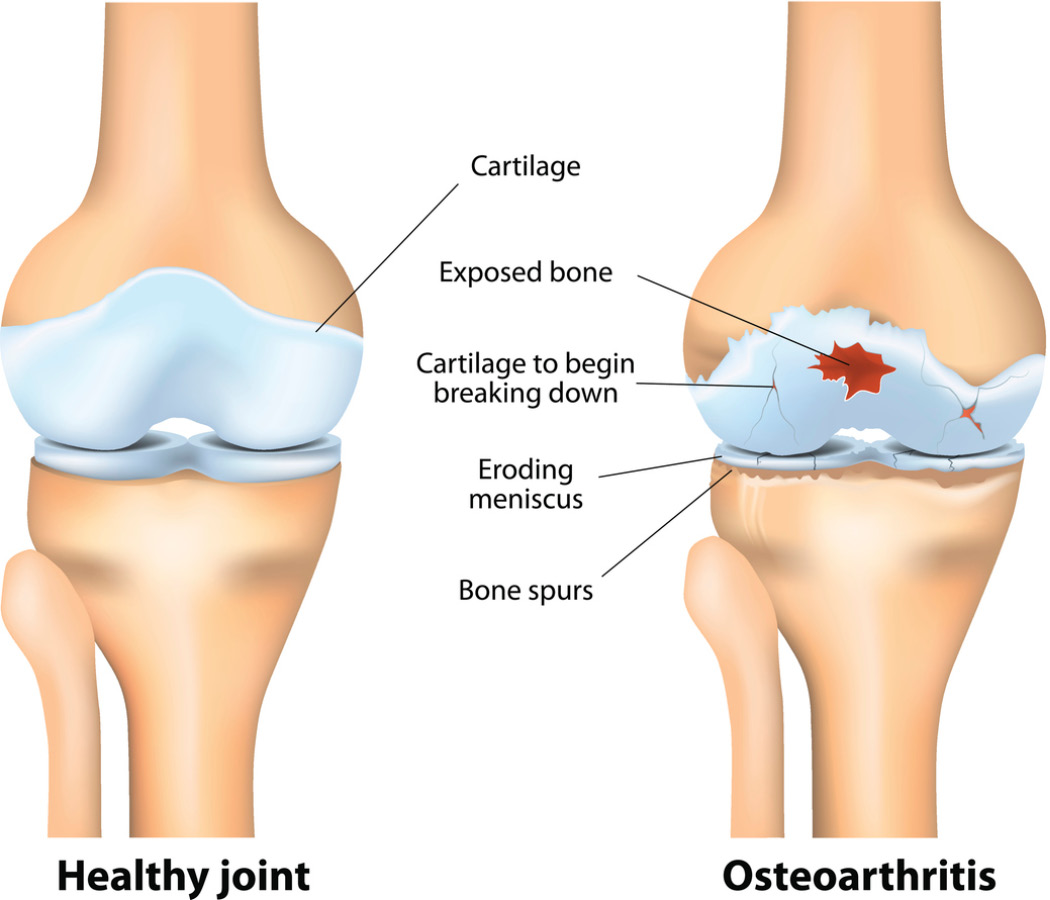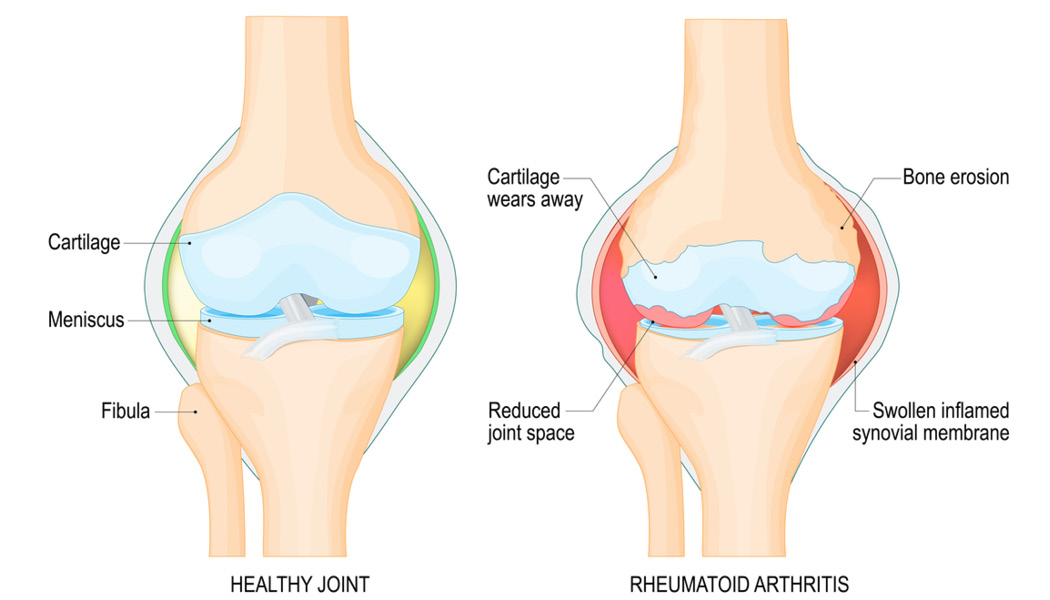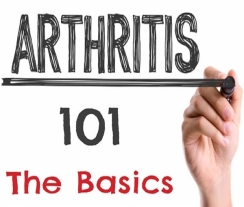
You cannot seem to get rid of that nagging ache in your hip, or the swelling around your knee that has been making it feel achy and stiff. Are all those years of being active in one way or another catching up with you? They very well could be. You might be exhibiting signs of osteoarthritis, the most common form of arthritis.
Osteoarthritis (OA)
Osteoarthritis, or OA, often occurs as we become older due to years of wear and tear on one or more joints. Things like long-term participation in sports, joint injuries, or repetitive activities of daily living can all contribute to developing OA. OA causes cartilage, which is the slippery, cushiony tissue that joints slide on, to break down. This makes it hard for the joint to move properly, which can cause pain and swelling. Symptoms of OA usually start gradually and worsen over time.

Typical signs of OA can include:
- Joint pain during or after activity
- Stiffness in the morning or after not moving for a while
- Soreness when touching the joint
- Sounds or feelings in a joint such as grating, grinding, popping, or clicking when you move it
Non-surgical Treatments for OA:
- Over-the-counter medications. Medications, such as anti-inflammatory drugs (NSAIDs) and acetaminophen can help alleviate OA pain.
- Low impact activity. Even though a joint may hurt when you first start using it, as you continue gentle motion, such as walking or bicycle riding, fluid is generated in the joint. That fluid helps ease the movement of the bone against the cartilage, which helps reduce pain.
- Physical therapy. Like low-impact activity, physical therapy can help mobilize an affected joint and improve range of motion. It can also help strengthen the muscles around a joint, which will stabilize it.
Treating More Advanced Cases of OA
As OA progresses, injecting corticosteroid or lubricating injections, such as hyaluronic acid, directly into a joint may provide pain relief. If nonsurgical or less invasive procedures do not reduce pain, other more invasive procedures, such as joint replacement, may be an option.
Rheumatoid Arthritis
Rheumatoid arthritis (RA) is different from OA in that it is an autoimmune disease. That means the inflammation is not caused by a mechanical action (“wear and tear”) but by a condition that attacks the fluid-producing lining of the joints (synovium). RA causes the synovium to thicken and makes the joint painful and stiff. RA is more common in women.
RA symptoms can be similar to OA, but they tend to affect multiple joints, especially the small joints of the hands, wrists, and feet. The same joint on both sides of the body is usually affected.

Other Types of Arthritis
Other less common types of arthritis include:
- infectious arthritis
- psoriatic arthritis
- gout
- juvenile arthritis
What You Can Do
For any type of arthritis, early diagnosis and intervention is key. Start the conversation with your primary care physician and schedule a visit with a provider who specializes in treating joint pain. After a thorough examination and, if needed, additional testing, your doctor will be able to diagnose the type of arthritis you have and recommend the best treatment for it.

